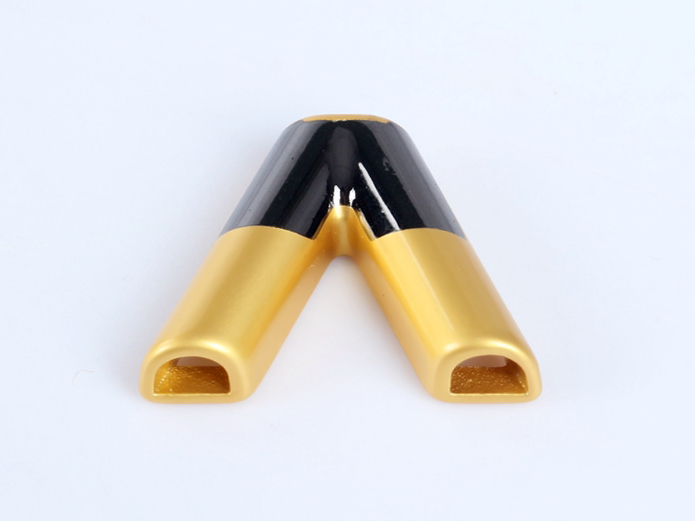Electroplating Aluminum Die Castings: Boosting Corrosion Resistance and Performance
Introduction
Aluminum die castings are widely used across automotive, aerospace, consumer electronics, and industrial equipment due to their lightweight, thermal conductivity, and complex design capabilities. However, untreated aluminum surfaces are prone to corrosion, wear, and limited adhesion for subsequent coatings. Electroplating offers an effective solution by depositing a metallic layer—such as nickel, copper, or chrome—onto the aluminum surface, improving functional performance and aesthetic appeal. At Neway, electroplating is integrated into our post-processing services to deliver robust, high-performance aluminum cast components.
Challenges of Electroplating on Aluminum
Electroplating aluminum is more complex than plating ferrous or non-reactive metals due to its oxide layer and reactivity. Freshly exposed aluminum surfaces instantly form an inert oxide film that inhibits direct adhesion of plated metals. To overcome this, a preparatory process known as zincate treatment is required.
Typical Pre-Treatment Sequence:
Cleaning: Removal of oils and machining residues using alkaline solutions
Deoxidizing: Strips the aluminum oxide layer
Zincate Treatment: Replaces oxide with a thin zinc layer to promote adhesion
Strike Plating: Initial thin nickel or copper layer to bridge aluminum and top coat
Main Electroplating: Builds the desired layer thickness (nickel, chrome, etc.)
Proper pre-treatment is essential for achieving consistent, durable plating on A380, A360, and AlSi12 aluminum alloys.
Benefits of Electroplating Aluminum Die Castings
Performance Metric | Improvement | Application Impact |
|---|---|---|
Corrosion Resistance | Withstands >96–500 hours salt spray (ASTM B117) | Prolongs part life in automotive and marine environments |
Surface Hardness | Up to 600–850 HV with hard chrome | Increases wear resistance in moving or abrasive applications |
Aesthetic Quality | Mirror-like decorative finish | Enhances product value and consumer appeal |
Electrical Conductivity | Copper/nickel layers provide conductive paths | Suitable for EMI shielding enclosures and contacts |
Lubricity | Lower friction on plated surfaces | Aids in part release and functional sliding components |
Electroplated aluminum castings deliver superior performance in environments involving salt exposure, moisture, vibration, and mechanical stress.
Common Electroplating Options for Aluminum
Plating Material | Description | Typical Use Case |
|---|---|---|
Nickel | Excellent corrosion and wear resistance; can be bright or dull | Connectors, housings, wear-prone parts |
Copper | High conductivity; often used as an intermediate layer | Electrical enclosures, bus bars |
Chrome (Hard) | Durable, smooth, high-hardness layer (up to 850 HV) | Decorative trim, automotive parts |
Tin or Silver | Good for solderability and conductivity | Electronics and electrical components |
Multilayer electroplating stacks are often used for components like zinc-coated cores, copper busbars, or aluminum control housings (e.g., Cu–Ni–Cr) to achieve structural and cosmetic functionality.
Industry Applications of Plated Aluminum Die Castings
Electroplated aluminum castings are used in sectors where surface performance directly affects reliability and branding:
Automotive: Exterior trims, handle bases, and transmission components
Electronics: EMI-shielded enclosures, antenna housings
Aerospace: Lightweight structures with corrosion and fatigue resistance
Consumer Products: Decorative finishes for home appliances and devices
For instance, nickel-plated A413 aluminum housings used in automotive sensors have shown excellent durability in 240-hour salt fog tests, with less than 5% surface degradation.
Integration with Other Surface Treatments
Electroplating is often combined with other finishing techniques to achieve optimal surface functionality:
Chromate Conversion Coating: Enhances adhesion for nickel or chrome plating
Polishing: Achieves Ra ≤ 0.4 µm before plating for smoother, uniform surfaces
Painting or Powder Coating: Electroplated surfaces offer better adhesion and protection
Masking: Selective plating to maintain dimensional features or grounding points
Neway’s plating workflow is designed to maintain tight dimensional tolerances while achieving consistent surface finishes tailored to your product’s needs.
FAQs
Why is a zincate treatment necessary before electroplating aluminum?
How thick is the electroplated layer typically on aluminum castings?
What types of corrosion protection can electroplating provide for aluminum parts?
Can aluminum die castings be both electroplated and painted?
What alloys of aluminum are best suited for electroplating?

